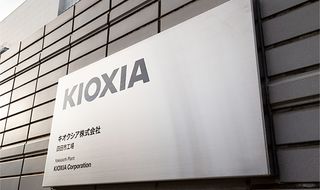Kioxia aims to mass produce 1000-layer 3D NAND by 2031 — quadruple the current number of layers
But that is going to be challenging.

Kioxia plans to mass produce 3D NAND memory with over 1,000 layers by 2031, according to the company's chief technology officer (CTO), Hidefumi Miyajima, reports Xtech Nikkei. During his lecture at the 71st Applied Physics Society Spring Meeting at Tokyo City University, Miyajima discussed the technical challenges and solutions for achieving over 1000 layers in a 3D NAND device.
Increasing the number of active layers in a 3D NAND device is the best way to boost the recording density of flash memory nowadays, so all 3D NAND makers strive to do this with new process nodes every 1.5 to 2 years. Each new node brings several challenges, as 3D NAND makers have to increase the number of layers and shrink NAND cells both laterally and vertically. This process requires manufacturers to adopt new materials with every new node, which is a major research and development challenge.
Today, Kioxia's best 3D NAND device is 8th Generation BiCS 3D NAND memory with 218 active layers and a 3.2 GT/s interface (first introduced in March 2023). This generation introduces a novel CBA (CMOS directly Bonded to Array) architecture, which involves separate manufacturing of the 3D NAND cell array wafers and I/O CMOS wafers using the most suitable process technology and bonding them together. The result is a product with enhanced bit density and improved NAND I/O speed, which ensures that the memory can be used to build the best SSDs.
Meanwhile, specifics about the CBA architecture, such as whether the I/O CMOS wafers include additional NAND peripheral circuitry like page buffers, sense amplifiers, and charge pumps, have not been disclosed by Kioxia and its manufacturing partner Western Digital. By producing memory cells and peripheral circuits separately, manufacturers can leverage the most efficient process technologies for each component, leading to further advantages as the industry progresses towards methods like string stacking, which will certainly be used for 1,000-layer 3D NAND.
It should be noted that Samsung also expects to achieve production-level 1,000-layer 3D NAND.
Stay On the Cutting Edge: Get the Tom's Hardware Newsletter
Get Tom's Hardware's best news and in-depth reviews, straight to your inbox.

Anton Shilov is a contributing writer at Tom’s Hardware. Over the past couple of decades, he has covered everything from CPUs and GPUs to supercomputers and from modern process technologies and latest fab tools to high-tech industry trends.
Most Popular



